Another aspect of the scale of cities that was illuminated to me by my recent trip to Paris is the issue of skyscrapers—or lack thereof—and the vitality of the city. One of the interesting debates that goes on in the comments to this blog, as well as in any urban/architecture/planning-type forum or website, is the matter of density and how it is best distributed across the urban core.
There are some people that want every new building in Downtown Denver to be the tallest it can be, even if it is at the expense of other new infill projects. One 50-story building, they say, is better than five 10-story buildings and certainly better than 10 five-story buildings. The appeal of skyscrapers is strong. As soaring works of engineering and (sometimes) art, they capture our imagination and represent a dramatic example of the prowess and progress of our species. For many people, the skyscraper is what it is all about.
There are other people, however, who believe that the best way to make a great urban environment is the “spread it around” alternative—in other words, assuming a sufficient supply of vacant land, 10 five-story buildings are preferable to a single 50-story skyscraper (as long as the ground floors are engaging, etc.). Philosophically, I support this view over the “skyscraper” approach, although I’ve certainly cheered virtually every new high-rise proposed in Denver. Generally I’m not about to openly denounce a 40-story building proposed for Downtown Denver if a developer is willing and able to build one.
But, in the end, it really comes down to this: What will give Downtown Denver the best urban environment? To me, it begins with a horizontal intensity of pedestrian-scaled, mixed-use buildings, supported by exceptional public transportation and a well-designed and maintained public realm. If we had a steady, sustainable demand here in Denver for the square footage of uses that require skyscraper development, I’d say let’s reach for the sky. But, in reality, the demand for that kind of density in Downtown Denver evolves at a relatively slow pace. Therefore, if the market demand supports the equivalent of only a few skyscrapers per decade, then I would prefer that that demand be met through multiple mid-rise buildings instead. We have hundreds of vacant parcels and surface parking lots in our urban core. If we hold out (as many property owners do) for a skyscraper on every vacant lot, then it will take decades—many of them—before our undeveloped Downtown land is replaced with vibrant urban uses. In the meantime, the remaining vacant parcels perpetuate a stagnant, anti-urban influence to the detriment of Downtown. I prefer that we achieve a great street-level urban environment sooner rather than later by replacing as many empty lots as possible, and worry about adding a “new tallest” to our skyline in the future. I’ll take five 10-story buildings over a single 50-story building any day.
Paris is the perfect example of this approach. About three million people live within a three-mile radius of Notre Dame with hardly a skyscraper in sight; yet, the environment is intensely urban and as thriving as can be imagined. That would be like putting the entire population of the Denver-Aurora-Boulder CSA inside the area bounded by Sheridan Boulevard, Colorado Boulevard, Interstate 70, and Mississippi Avenue, with virtually no high-rises.
As you know, this is the typical density of Paris:
How do we achieve this in Denver’s urban core? One approach would be to downzone the urban core. Yes, I said the “d” word. If dozens of vacant or underdeveloped parcels in Downtown Denver currently have zoning on them that allows for 50-story (or higher) towers, then few property owners will want to sell their vacant land for a price that is anything less than a value commensurate to the development of a 50-story project. That’s one reason why we have so many holdouts: landowners who are waiting for the once-in-a-lifetime opportunity to strike it rich by selling their crappy parking lot to Donald Trump for his next mega-tower. Meanwhile, generations go by while Downtown Denver suffers all those crappy parking lots. A reasonable downzoning in conjunction with a Transfer of Development Rights (TDR) program would ensure that the property owners don’t lose the economic value of their land under the existing zoning, while providing parcels to the market at land values that actually pencil out for mid-rise projects.
Another approach would be to change our property tax structure for Downtown Denver. Currently, property in Denver is taxed on the value of the land and improvements (i.e. buildings) with the emphasis on the improvements. But a surface parking lot? Not much “improvement” value there. Consequently, relatively low property taxes on vacant parcels discourage their development. But, if we adopted a Land Value Tax approach for Downtown Denver, we’d incentivize property owners to develop their land or sell it to someone who would, and discourage land-banking and speculation. The Land Value Tax approach has worked well in the cities that have tried it, such as Harrisburg, Pennsylvania, where significant infill development has occurred in their downtown since implementing the LVT.
Skyscrapers are cool, but I would prefer Downtown Denver to become more like Paris than New York City. Maybe once we’ve covered 100% of our urban core with buildings and bustling streets, we can justify taking it to the next level. But for now, the best thing we can do for Denver is to achieve Mayor Speer’s vision of a “Paris on the Platte”.



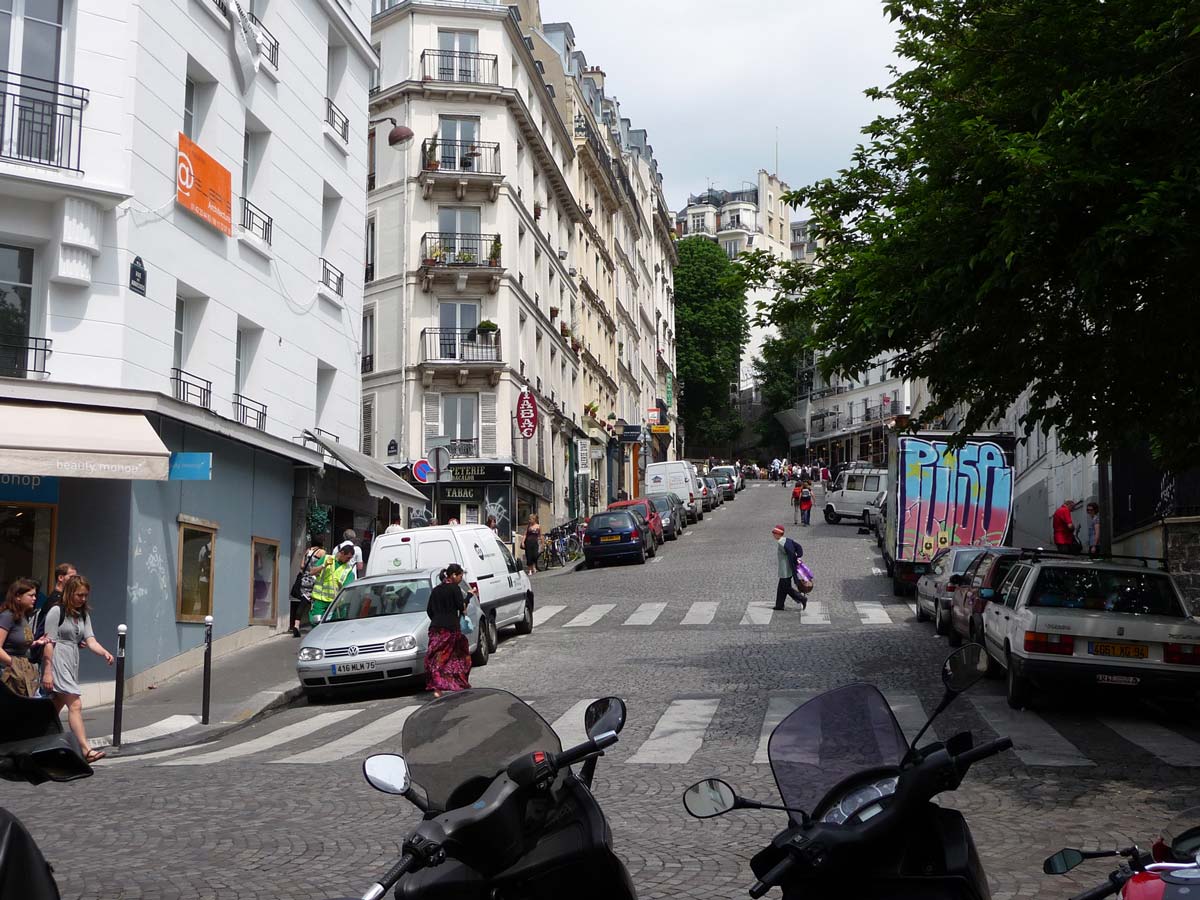

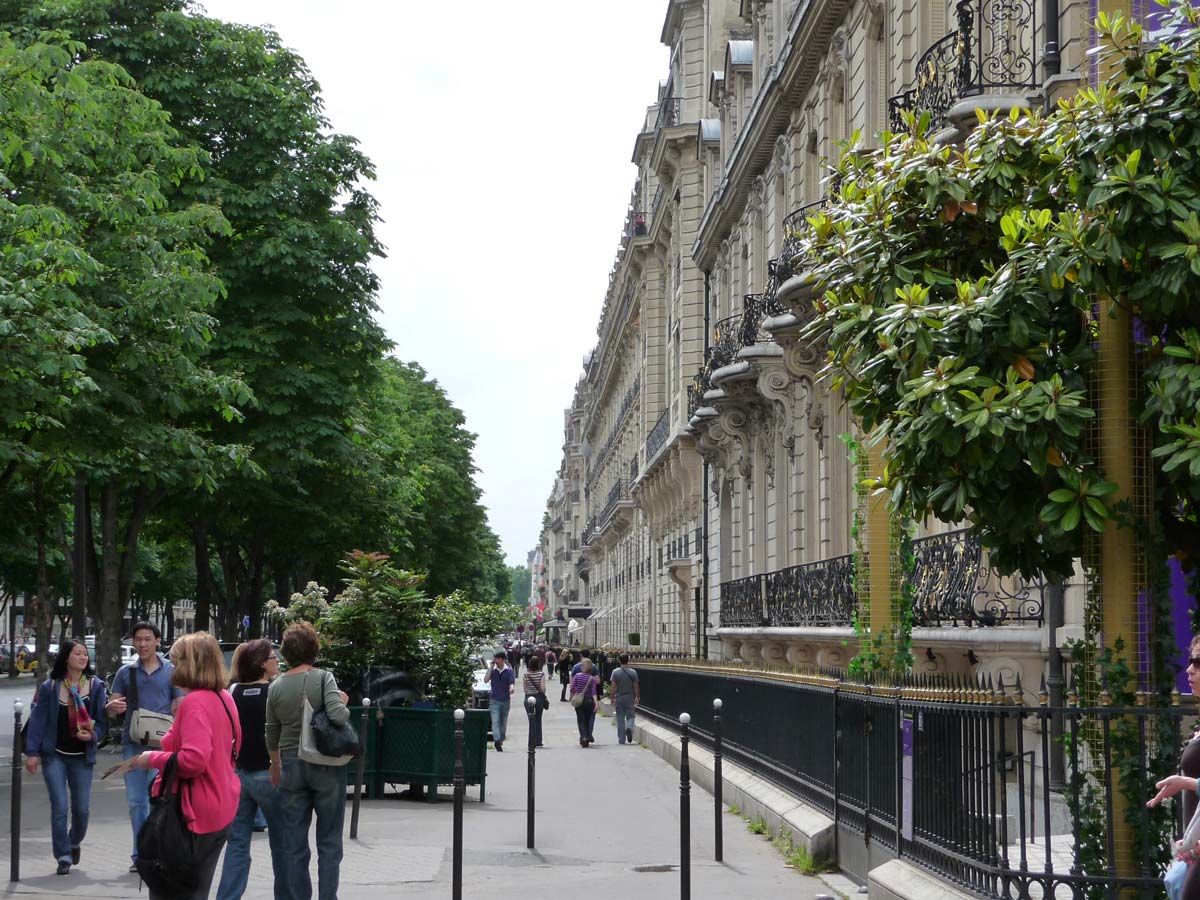



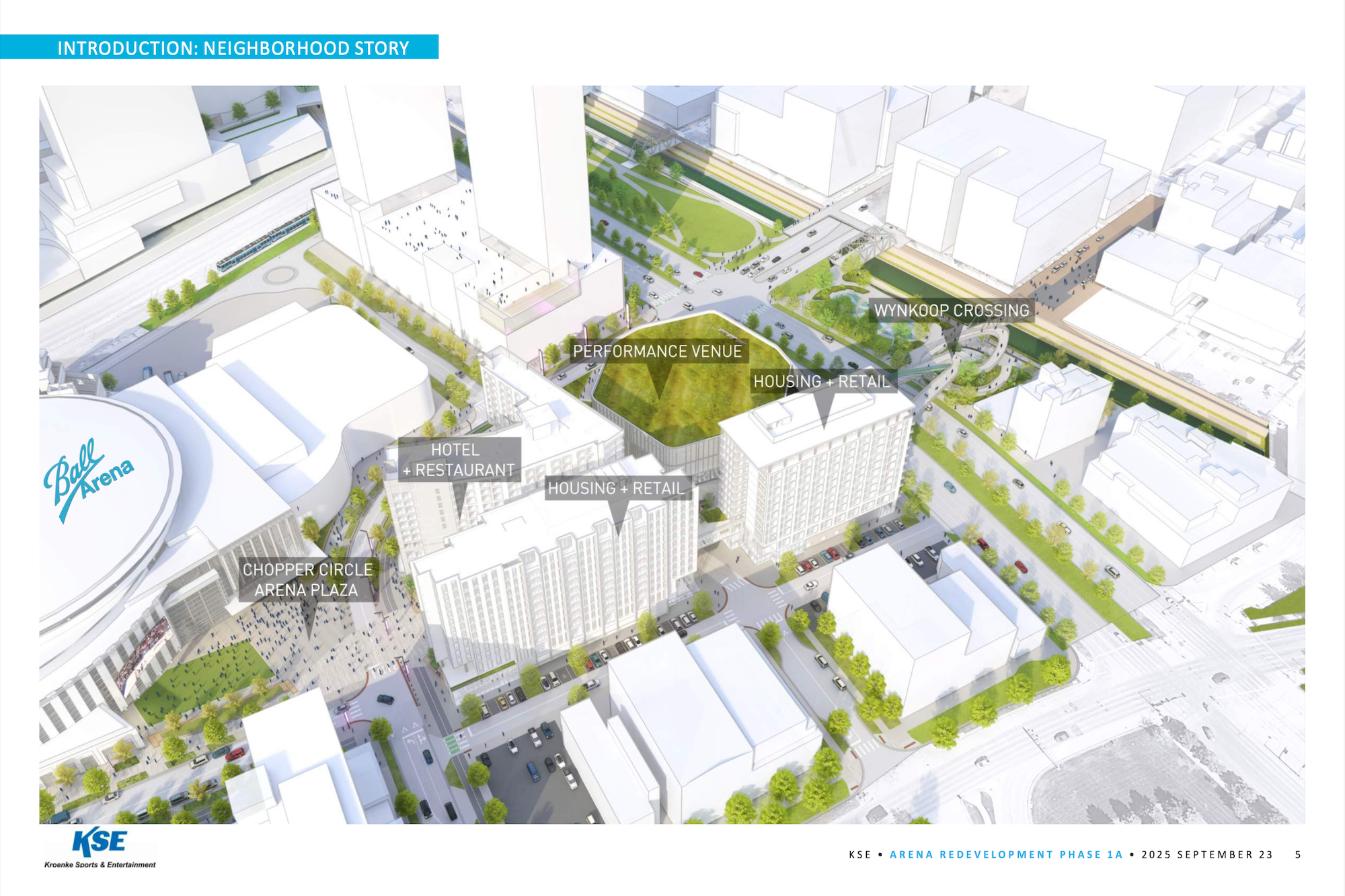
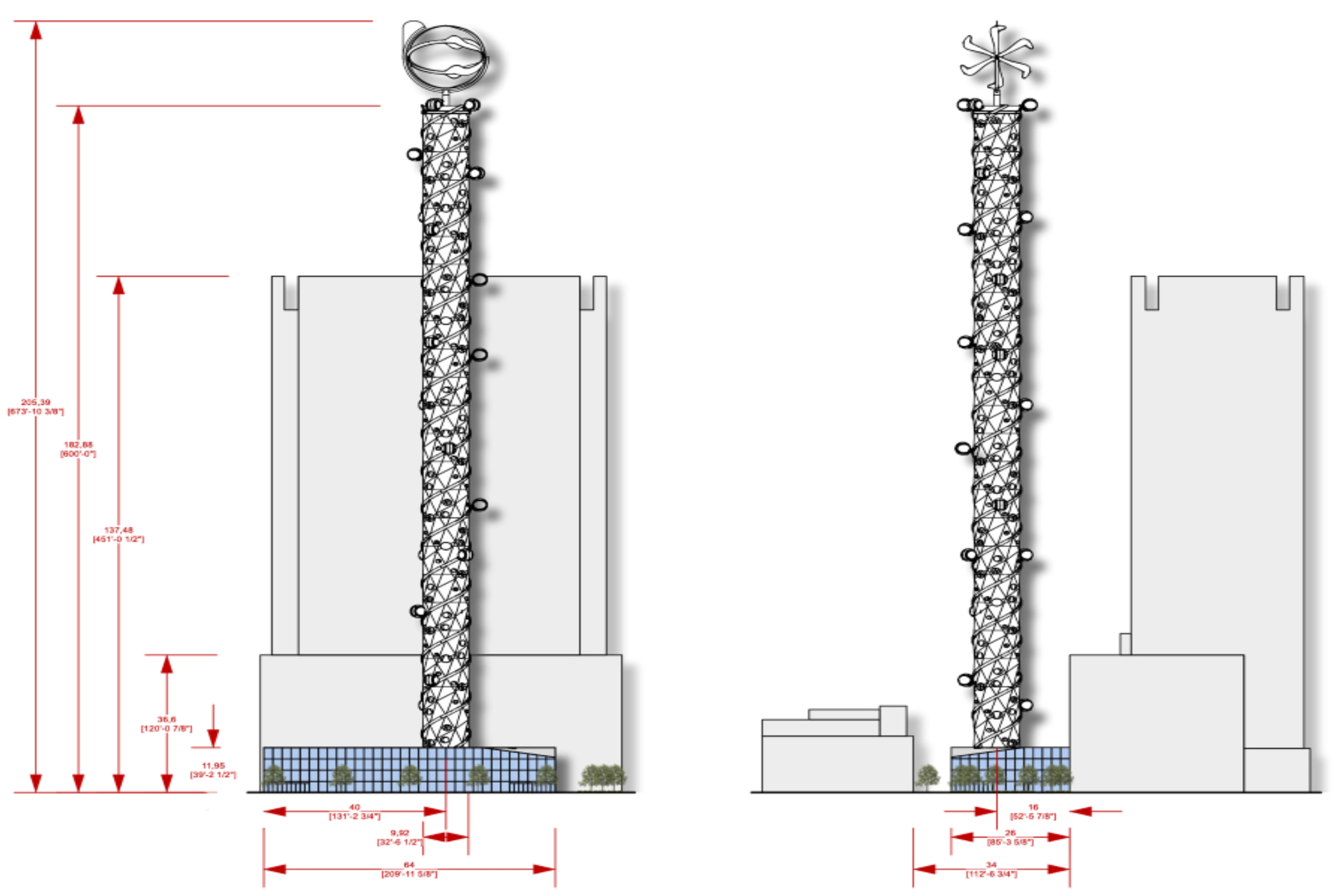



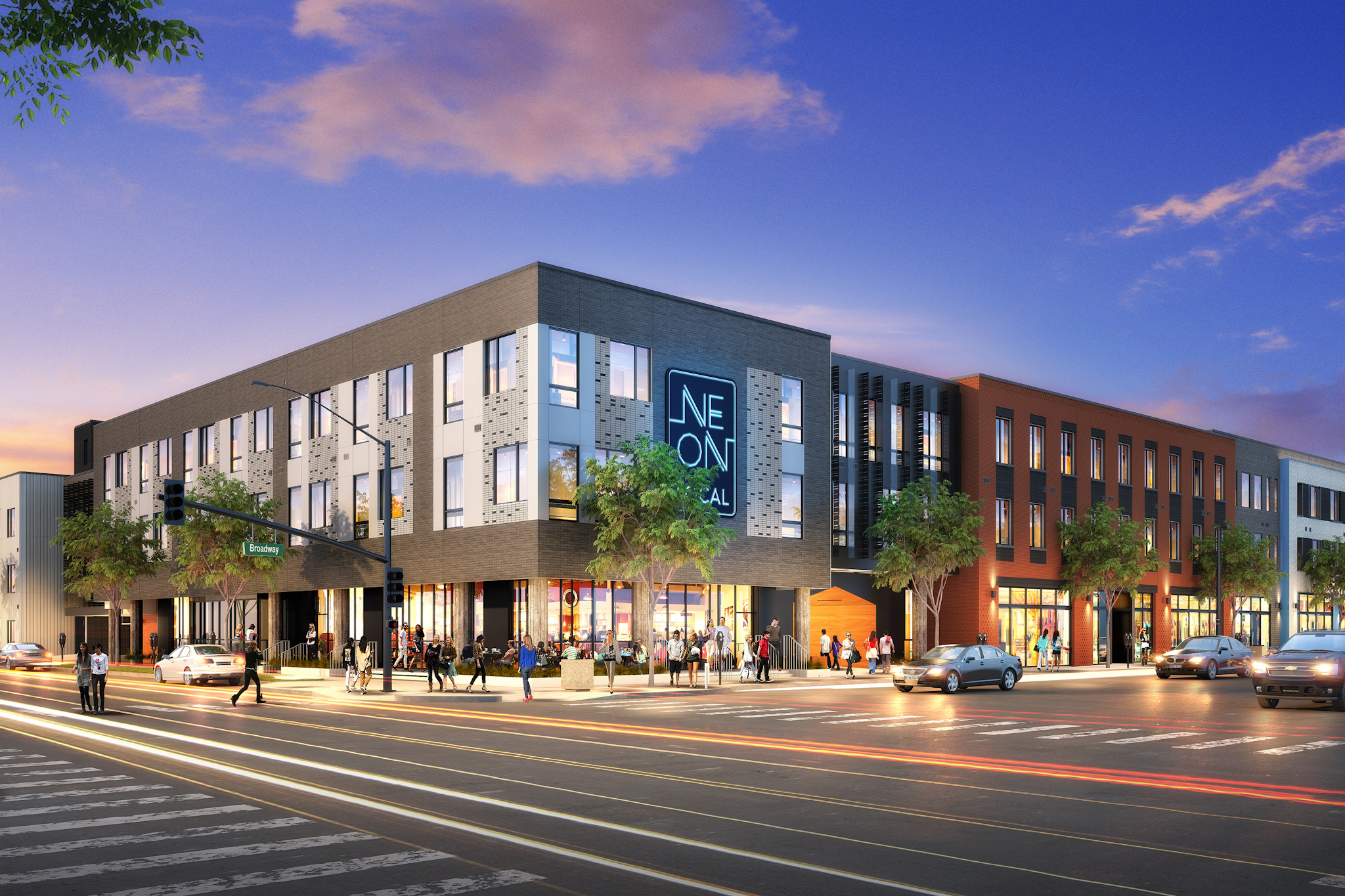
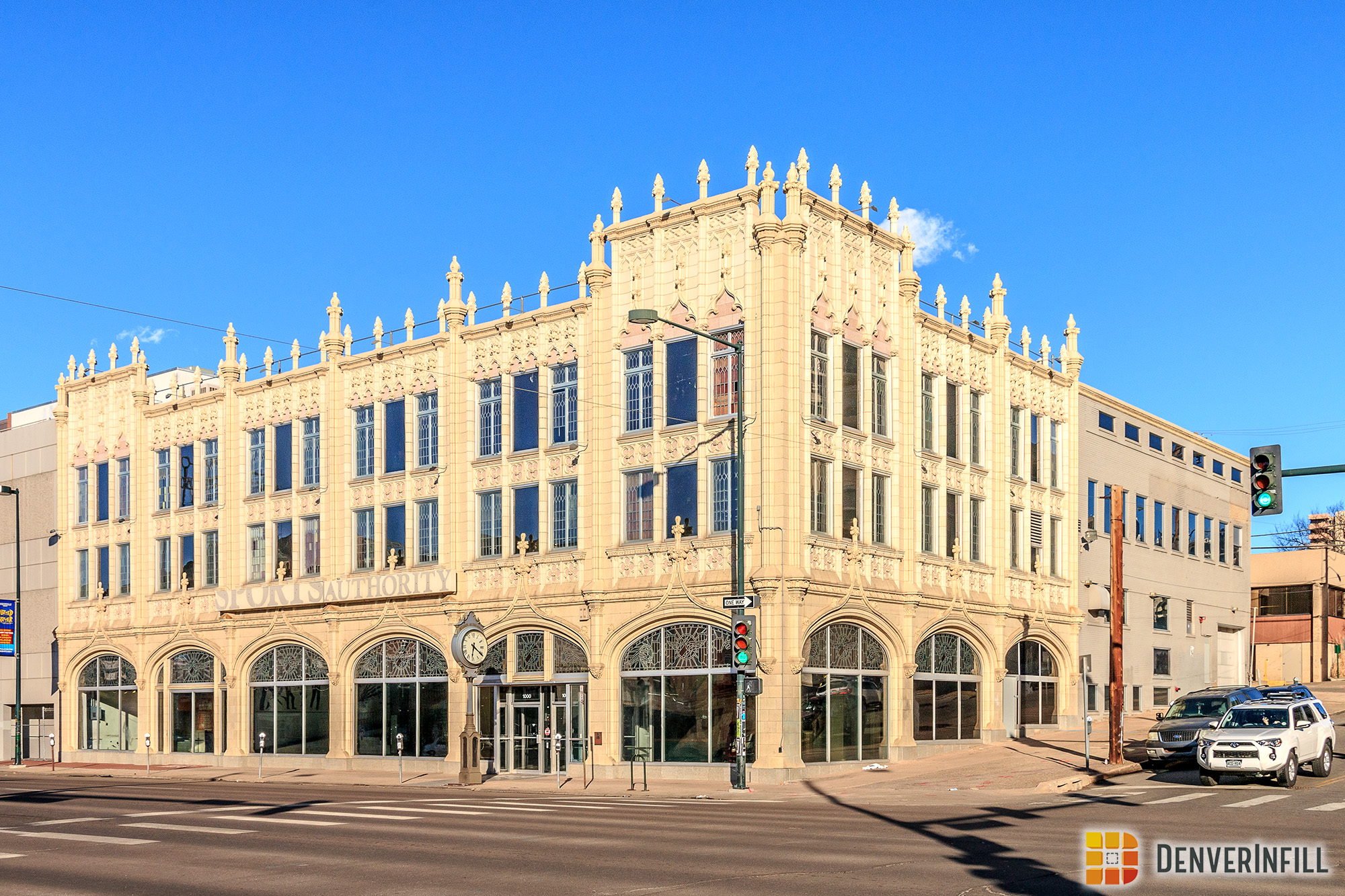

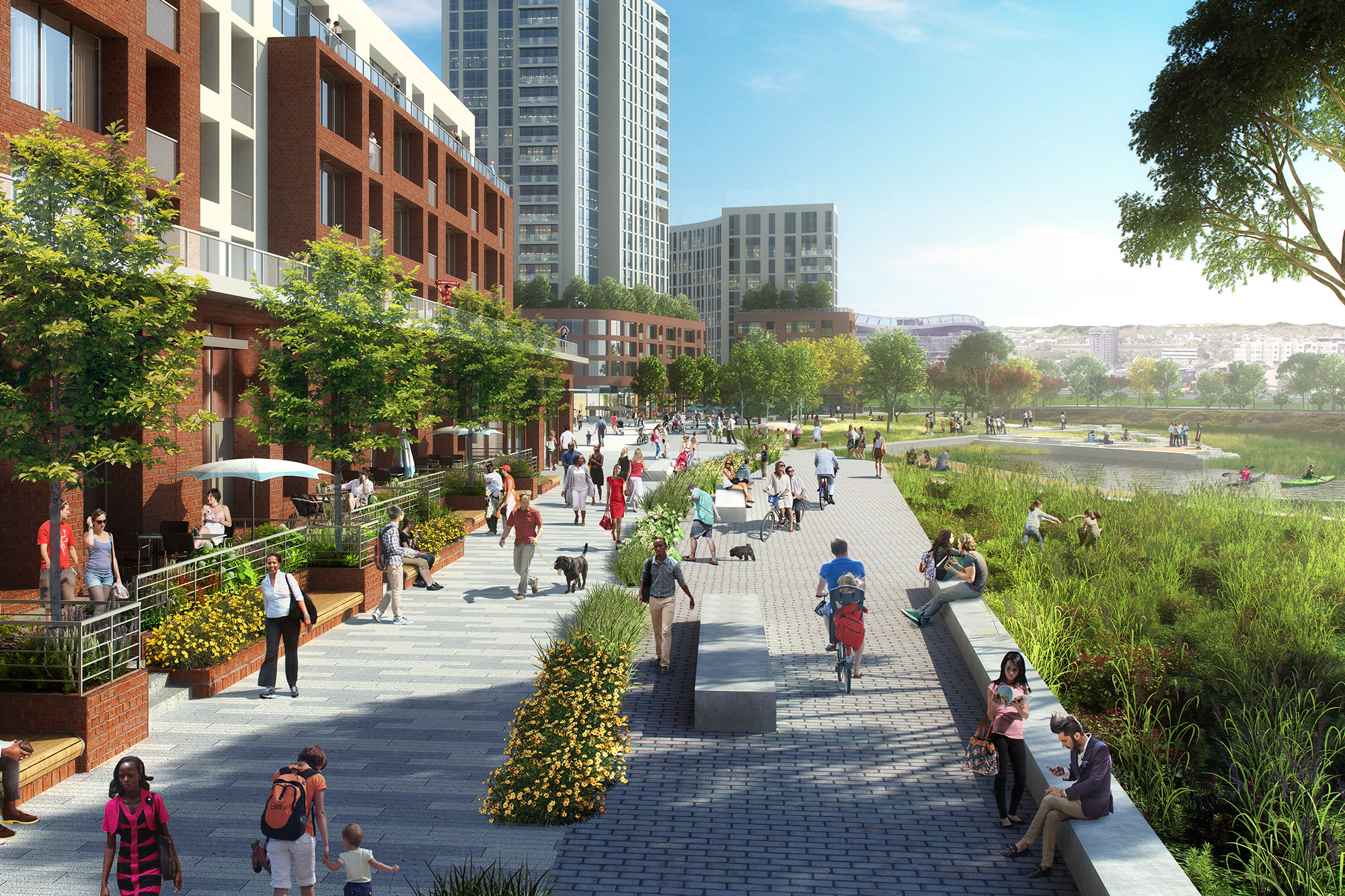
The Land Value tax is featured in this month's Atlantic Magazine.
http://www.theatlantic.com/doc/200907/ideas-tax
Couldn't agree more. Nice work Ken!
So you mean it's possible to have a pleasant pedestrian environent without setbacks and grassy buffering? Nice blog Mr. Ken.
As someone who has worked with Harrisburg, I can say that the revived downtown has involved the usual tools, and lots of land value tax. The city taxes land at six times the rate of buildings. Tax burdens in low-income neighborhoods have dropped and residential infill is happening after the disasters of the late 70s and early 80s.
LVT has to be done right, but when adminsitered well, it works.
Josh
The thing is, and I agree for the most part with this post, it's not like Paris doesn't have skyscrapers.
They have just chosen to develop their "CBD" outside the city center.
For a city as sprawled as Denver, if it becomes more difficult to build downtown, or extra restrictions are added it could simply push development outside the city.
Now personally, I think a city like this could be very nice, if Denver itself developed as Ken as described into a more low level, Parisian like urban environment (It would help if Denver has a real river to build around) and the taller office buildings got built in the DTC. That way the DTC could serve as a hi-tech, modern office area with the towers (although I dont know what height restrictions are in place in that area, and much of it is in Greenwood) and Denver could be much more of a pedestrian urban city.
Ken-
Since your lobbying efforts with redevelopment of the Fontius buildng were so successful, are you going to initiate the same push for a land value tax?
Please do. I'm ready to start writing my city coucilwoman.
This is some good writing, and quite persuasive.
I'm skeptical about downzoning. I understand the logic, but there would be many ways to get it wrong.
LVT could be what we need. Is the city thinking about that? How do we get these things on their radar screen?
Ken, HOOORAH!! Yes, the land value tax is the way to go!
Encore, J'adore Paris! 🙂
by the way, I run http://www.urbantools.org Studying implementation of LVT is our job; we've helped many cities approach it rationally and factually. If we can help…
(I apologize if this is a duplicate post, I'm having problems logging in)
I love this entry! When I started visiting this site I was cheering on skyscrapers too, and have learned a lot in the 3 or so years I've been visiting. Yes, it would be better to have a filled-in and attractive street level city than a CBD of towering office buildings.
Imagine how many parking lots would be filled if we took just one of our Big Three skyscrapers, say, Republic Plaza, and unstacked it into blocks and blocks of 5-story buildings. With a relatively small impact on the actual skyline!
But skyscrapers do serve a purpose, and from what I have seen on maps, Denver's zone without height limits is still relatively tight. I support the height restrictions that are in the Central Plate Valley and Civic Center but I don't necessarily want to see a total limit on building height in Denver.
I'd much rather see property tax adjustments used to encourage people to invest in their underdeveloped land. Perhaps property tax calculations could be broken into two half payments, one based on land value alone and one based on total property value – that way you don't lose as much value or tax base on the skyscrapers and projects that are already built and generating huge amount of revenue.
You can increase the land tax rate to make up revenue lost from property taxes. A property tax punished people for investing in and improving their land, something we don't want to discourage.
Instead of the two extremes (Paris or New York) what about London? London has beautiful urban neighborhoods with 10 story (or so) buildings and they also have beautiful skyscrapers and an ever impressive skyline. What you said was right, Mr. Ken. We should make Denver denser, then we can worry about building tall.
Ah Paris, the city that 10 years ago turned my interest in the built environment and architechture into a passion. While I mostly agree with Ken's analysis that horizontal density is better than vertical, I do love a towering financial core with the skyscraper canyon effect. I think it's the contrast of the two that makes a truly great city. Denver has an opportunity to have the best of both worlds – NYC in the central business district, and Paris in Arapohoe Square, LoDo, Ball Park, Golden Triangle and CPV. Of course it'll take 50 years without the help mentioned by Ken.
Yeah, I don't think I'd be satisfied with just that. I've lived in Galveston Tx & New Orleans which have similar layouts from French settlement. They are dense and void of many open parking lots. Yet these towns aren't in the greatest shape economically. I believe big commercial buildings are indicative of a good business market and I would like to see a balance. However, anything to get rid of the shitty parking lots between Arapahoe Square and Upper downtown, I will definitely take.
Precisely! I love skyscrapers, don't get me wrong, and my love for them stems from moving around a lot growing up. Every time we'd fly into a new city I was looking for the skyline because it was my first impression of my new home (and my first home happened to be one of the more fantastic skylines of Chicago). So I love skyscrapers, and I love them when they're done right: when they're livable pieces of art, that add appeal and beauty to a city's environment. But those kinds of skyscrapers are rare.
I also lived in Europe, in The Hague, and while it was one of the smaller metropolises I've lived in it was the most bustling. Why? Because of the reasons you just stated: density and a collection of appealing buildings that keep the neighborhood vibe alive.
The older I get the less appealing skyscrapers are, because I realize they look great from a distance (or from the air), but when you get up close they're often lonely and isolating.
Could you, or someone, please state this case to city government, because I think you are right on.
Great post. Two comments:
1. >Skyscrapers are cool, but I would prefer Downtown Denver to become more like Paris than New York City.
This is something of a false dichotomy, since NYC doesn't have any parking lots either. A "better" example would have been Houston.
2. Actually, the Front Range offers a perfect example of what you're talking about. On one hand you have downtown Boulder, with its high quality urbanism and strict height limit. On the other hand you have Denver Tech Center, with lots of tall buildings surrounded by parking lots. Now, without suggesting that tall buildings and quality urbanism are mutually exclusive (NYC proves they're not), anybody here think DTC is a better urban environment than downtown Boulder? Any raised hands? Didn't think so.
PS: Don't take this as a wholesale endorsement of Boulder's planning. Boulder has made some absolutely monumental mistakes (the Danish Plan is the worst piece of NIMBY, environmentally-destructive trash in the region). But just in the context of this discussion, downtown Boulder is sure a nicer place to be than DTC.
beyonddc you are right. I've been in Houston for the last 6 months and this is more of a place that cares more about the appearance of their skyscrapers than good zoning and urban development. They do however have good density between the galleria business area, montrose, mid town and downtown. I really think that the urban environment of Boston is a realistic possibility for Denver. However, I would like to see us with some better skyscrapers than Boston. We shall see in the future.
Both downzoning and a Land Value Tax completely discourage developers from wanting to have anything to do with Denver. Add in CO's lack of legislation that makes construction defect litigation run rampant, why would anyone want to develop in Denver. I am under the belief that property owners should have the right to do what they want with their property. Once the government starts imposing regulations nothing good can come from it.
The land value tax proposal is spot on and how about adding another inclusion? Let's see some financial incentives to developers to donate tiny parcels of their projects for micro-parks, something that can be as little as a park bench, a narrow bit of grass and a few trees.
Complaints from prospective condo owners/buyers often are that Denver simply has no place to walk pets and developers, totally ignorant of this reality, burn up lot line to lot line for their project, ignorant of this critical need. The fact is that many current projects in Denver that are struggling, forgot this small accommodation and their lack of sales/rentals are reflective of this omission. I know this is a concern of many buyers about One Lincoln, one of our newest and most attractive buildings.
dori- right on regarding the need for more parks. i am moving to denver from new york, currently living in alphabet city. during the 1970's and 80's the neighborhood was overrun with burnt out vacant lots. the upside is that community organizers with foresight turned these areas into community gardens so now almost every block has its own green space, something that would be impossible today with real estate values through the roof. converting parking lots into gardens would be a nice complement to urban infill.
Don't believe me? Watch the New Urbanism video posted just after this Paris 2 post. It pretty much sums up my point.
"Don't Parisonify Denver"
Let's not get carried away. I have no antipathy toward skyscrapers. I said they're cool and they are certainly appropriate still in Denver's core CBD. I obviously did not attampt to cover all topics related to Paris, Denver, and the design of cities in one post. Obvously the Metro is a huge part of the success of Paris and I hope we can build something similar here one day. Also, I am a big proponent of green building and sustainability and there's no reason why you can't have a Paris type density surrounding the CBD towers and have it be sustainable. Finally, Paris is not "low density" it is one of the most densely populated cities in the world. Finally, your comments, which I appreciate, would be more appreciated if you did not post anonymously. Tell us your name.
regarding point A-
Building out a multibillion dollar subway system in denver would be a poor use of resources. a fully functional bike share with protected lanes, along with streetcars and BRT would go a long way to making "unwalkable" denver more pedestrian friendly. To use your example- Coors field to DAM is a 10 minute ride along the cherry creek path. If we fully utilize bike share that will free up space on the road for buses and taxis to transport those unable or unwilling to pedal. I currently live in manhattan and can ride from the east river to the hudson in under 15 minutes, far faster than on the subway. biking really makes the city seem much more compact and accessible.
"we've covered 100% of our urban core with buildings and bustling streets" And that's why no US city will ever rival Paris, or any major European city, for that matter.
Two words: gas tax.
The problem with Denver is that downtown real estate is not valuable enough. Why? Because – disregarding the obvious externalities involved in commuting via car – it is still highly cost effective for most to purchase a large home on a moderate sized lot in the suburbs and commute to work downtown. For most, this is more appealing than an apartment or condo downtown. Whether we want to see Denver develop as a mid-rise city like DC or Paris, or a dense high-rise city like NYC or Chicago, neither will happen until living in the 'burbs is no longer cost effective. For each ten cent increase in the price of gas, a portion of the car commuting public is going to decide that it makes more sense to live closer in to downtown – the more ten cent increases in the cost of fuel that occur, the more infill we will see downtown.
A gas tax also has the benefit of making those responsible for the harmful side effects of cars pay for them – why shouldn't the attorney or banker commuting from Greenwood Village every day pay for the smog that they choose to create?
Just my two cents.
Well yes, people in urban environments are dependent on transit. Just like people in Florida, La., Texas are dependent on their clogged highways when the hurricanes come to visit.
At this precise time we are fortunate to have abundant credit and cheap fuel. If (when) that evaporates the notion of public transit being expensive will evaporate as well.
I would be money Paris is denser than Chicago, and Washington is definitely denser than Houston.
Just sayin'.
As a downtown resident, it seems to me that at least one reason people would rather live in the close 'burbs (such as Platt Park, Highlands, etc) rather than downtown is due to the lack of interesting buildings outside of the LODO area. It's unfortunate, but many of the buildings which were built downtown during the 70s and 80s building boom are excessively utilitarian in design; why wouldn't someone trade bland downtown living space for a tidy home with late-Victorian character?
I find the LVT idea compelling and agree that it probably has great potential for enabling the construction of quality downtown spaces. However, I am also given pause by the likely possibility that an LVT system would skew too much in favor of constructing as soon as possible to reap its tax benefits. I certainly don't appreciate the empty lots and underused spaces in the downtown core. But I have to admit that I would rather the potential that comes with these empty lots than a host of poorly-planned, ugly, and hastily constructed building which add little to the quality of downtown living and will be around for many years to come.
I find it bewildering that some people find Denver to be unwalkable. It is as walkable as any city I have ever been to. Denver is even more walkable than Paris in the sense that you have to deal with alot more vehicle traffic there. Paris, London, Rome, Madrid, and other cities I have been to seem extremely un-friendly to bicyclists. I also don't really understand why some people also feel that subways are always better at transporting people than street cars, light rail, and buses. As long as vehicle traffic does not seriously impend the flow of these ground-level transportation systems, they seem to work well. Putting trains underground seems like a tremendous waste of money unless the population density supports it. I personally do not like subways because I would prefer not to be underground where it is dark, dingy, and claustrophobic (especially the European subways I have riden). San Francisco's BART and D.C.'s Metro are improvements because they are more spacious. New York's subway is often down-right disgustingly filthy.
Corey
I'm with you, Ken. I'd love to see more 5 to 10 story buildings in downtown Denver. I think more people feel comfortable with that scale of building.
Of course, in Paris, I would bet people live in much smaller spaces than Denverites would be willing to accept.
mmmm…paul. did you go there?? their bread is soo good.
Yes, yes, undeniably yes.
Stop the mediocrity of developers in this town!